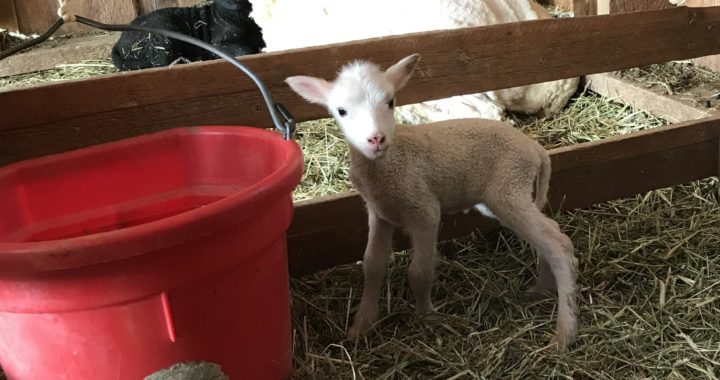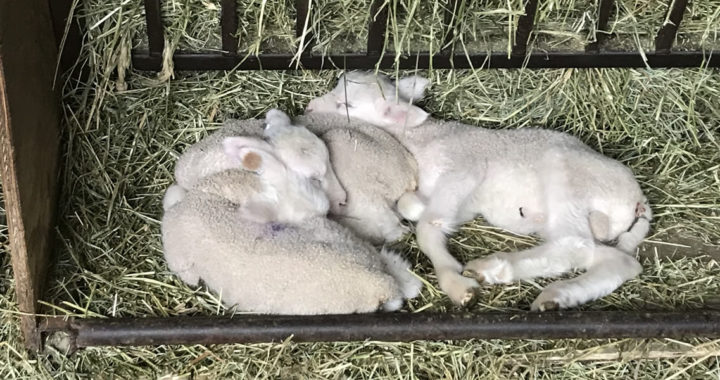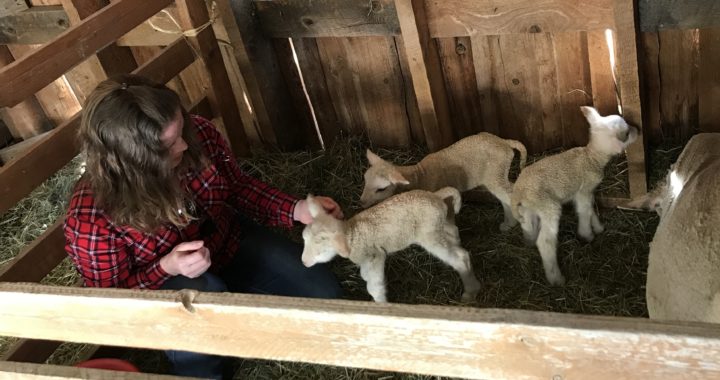It’s lambing time again this year and there are already a number of healthy lambs running around the barn! We caught one ewe on video as she was getting ready to have her third lamb. If you’d like to watch, play the video below. A little bit of help was needed after the lamb was born to break open the sack.
Category Archives: Spring Lambs
Lambs at Play
The lambs love to run and kick up their heals together. Here’s a video clip we thought we’d share with you, while the ewes are busy eating the lambs decide to run and play. They are cute to watch.
Newborn Lamb Stands for the First Time
It is remarkable how quickly a lamb will stand up and then walk around searching for milk just minutes after being born!
Quads
This ewe was our first to lamb with a set of quads! We will likely have to take a couple of these lambs to bottle feed but for now the ewe will be able to provide these four with the essential colostrum that they need. Colostrum is the first milk produced by a ewe when their lambs are born. It’s the key to survival for lambs as it is high in fat which helps them maintain their body temperature and helps protect the newborn lambs against disease.
Why do some lambs need bottle fed?
Unlike a cow that has an udder with four teats, a ewe has only two teats. This means that if she has more than two lambs she may not be able to provide enough milk for them all. This is why we will often bottle feed some of the lambs. This helps ensure that all the lambs get enough milk to thrive.
Grafting
When a ewe has more than two lambs it is often difficult for her to feed them all. We will either have to bottle feed one lamb or find another ewe who only had one lamb to adopt one. This is called ‘grafting’. Grafting is the process of assessing milk/colostrum production in ewes and matching lambs to supply. This is not always an easy thing to do as ewes look for their scent on the lambs when their born.
So far Dean has successfully grafted one lamb to a new ewe this year. Here is a video of ‘Tiny’, she is one ewe that has great mothering instincts and she took this lamb and loved it right away! She’s our ‘Rock Star’.
Here’s a photo of Tiny with her lamb and her new adoption.

Why do the sheep have numbers painted on them?
We use a special livestock paint to paint the same numbers on a ewe as we put on her lambs. This is done so that from a distance we can easily spot who belongs to who. Different colors represents the different amount of lambs the ewe had.
First Lambs
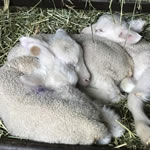
We have just over 30 ewes to be lambing in the next few weeks. So far we have had 15 of those lamb.
After a couple of days of bonding we let the triplets out with the rest of the ewes with lambs. It’s so cute how they’ve stuck together. Their favorite spot to nap seems to been in the feeder.
I have to learn to take my camera with me every time we go to the barn. Seems the times I forget it is when I see so many things I’d like to share.
I did get a photo of this one though, the lambs seem to like to tuck themselves into little places. This spot, between a couple of jugs, has become the favorite hangout for lambs. It drives the ewes crazy because they cannot get into this spot, I’m calling it ‘lamb ally’.
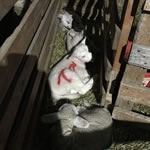
We’re Lambing
The lambs have started arriving! It’s music to our ears to hear the newborn ‘baa…baaa’ greeting us as we near the barn. So far we’ve welcomed a couple sets of twins from some first time mothers and today a set of triplets.
Lambs are usually up and looking for their first drink within 15-30 minutes of being born. Figuring out how to balance and coordinate their legs so quickly always amazes me AND they know just where to look for that first drink!
We keep the ewes in ‘jugs’ or small pens with their lambs for the first few days so we can keep an eye on them to make sure they are all nursing well before we put them together with the other ewes with lambs. The first 24 to 48 hours after birth are a critical time for the ewe and her lambs. During this time, bonding occurs and the ewe as well as her lambs learn to identify each other.


